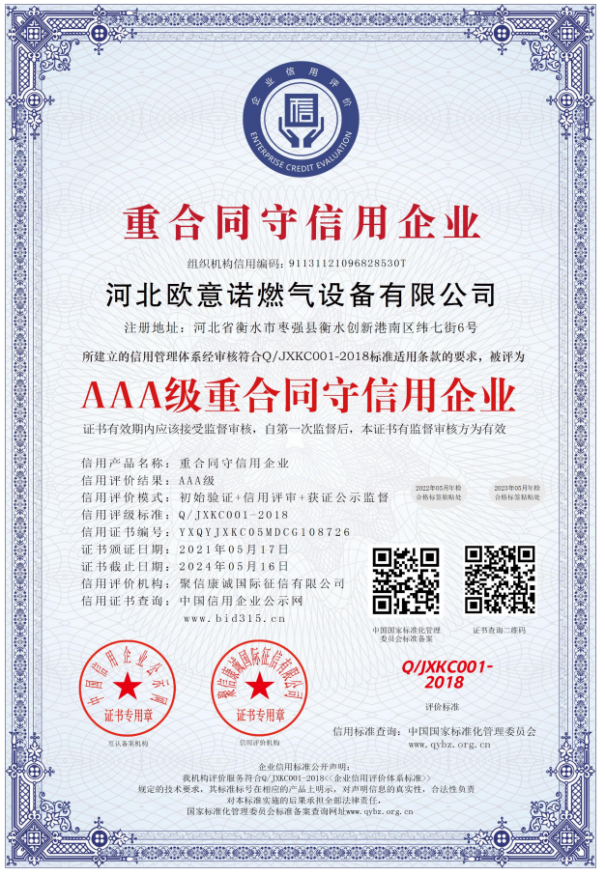
Nov . 11, 2024 21:51
Back to list
مخفض ضغط الغاز
Understanding Gas Pressure Reducers Function and Importance
Gas pressure reducers, also known as gas pressure regulators, are vital components in various industries and applications. Their primary function is to control and reduce the pressure of gas from a high-pressure source to a desired, safe delivery pressure. This regulation is crucial in ensuring the efficient operation of gas-powered systems, enhancing safety, and maintaining equipment integrity.
How Gas Pressure Reducers Work
Gas pressure reducers operate on a relatively simple principle. They consist of a valve mechanism that responds to changes in pressure. When gas flows from a high-pressure source, it enters the regulator, which is designed to release the gas at a lower, stable pressure. This is usually achieved through a diaphragm mechanism that reacts to the downstream pressure. If the downstream pressure drops below a set level, the diaphragm opens the valve to allow more gas to flow in; conversely, if the pressure exceeds the threshold, the valve closes to restrict gas flow. This dynamic response ensures that the end-user receives a consistent gas pressure.
Types of Gas Pressure Reducers
There are several types of gas pressure reducers, each suited for specific applications. The primary types include
1. Single-Stage Regulators These reducers are ideal for applications requiring a simple reduction from a high to a lower pressure. They are typically used in situations where the pressure drop is not extreme and where variations in demand are minimal.
2. Two-Stage Regulators For more demanding applications, two-stage regulators provide better pressure control and stability. They operate in two phases of pressure reduction; the first stage reduces the high pressure to an intermediate level, and the second stage brings it down to the final delivery pressure. This design minimizes the pressure fluctuations that can occur with a single-stage system, making it suitable for sensitive applications.
.
Applications of Gas Pressure Reducers
مخفض ضغط الغاز

Gas pressure reducers are commonly employed in various sectors, including
- Industrial Manufacturing In factories where gases such as oxygen, nitrogen, or natural gas are utilized, these regulators ensure that the appropriate pressure level is maintained, allowing machinery to function optimally.
- Medical Facilities In hospitals, gas pressure reducers are crucial for supplying oxygen and anesthetic gases at safe and effective pressures for patient care.
- Residential Use For households using natural gas for heating or cooking, pressure regulators ensure that appliances receive a steady pressure, preventing dangerous leaks or explosions.
- Automotive Industry In vehicles powered by natural gas, regulators play a critical role in managing fuel delivery to the engine, ensuring efficient performance and compliance with emission standards.
The Importance of Safety
One of the most significant benefits of gas pressure reducers is enhanced safety. High-pressure gases can be hazardous and pose risks of explosions or leaks if not properly managed. By reducing and stabilizing gas pressure, these devices mitigate such risks, protecting both people and property.
Conclusion
Gas pressure reducers are essential for controlling and regulating gas pressure across various applications. Their ability to ensure a safe and stable gas supply is crucial in industrial, medical, residential, and automotive sectors. Understanding their operation and importance helps in appreciating the role these devices play in everyday life and various industries, highlighting the necessity for proper selection, installation, and maintenance to ensure optimal performance and safety.
Next:
Latest news
-
Safety Valve Spring-Loaded Design Overpressure ProtectionNewsJul.25,2025
-
Precision Voltage Regulator AC5 Accuracy Grade PerformanceNewsJul.25,2025
-
Natural Gas Pressure Regulating Skid Industrial Pipeline ApplicationsNewsJul.25,2025
-
Natural Gas Filter Stainless Steel Mesh Element DesignNewsJul.25,2025
-
Gas Pressure Regulator Valve Direct-Acting Spring-Loaded DesignNewsJul.25,2025
-
Decompression Equipment Multi-Stage Heat Exchange System DesignNewsJul.25,2025

